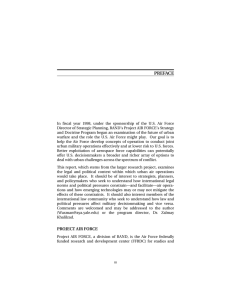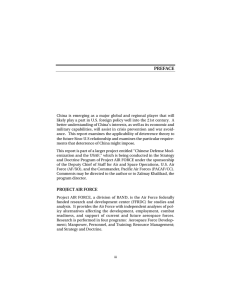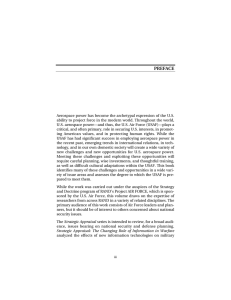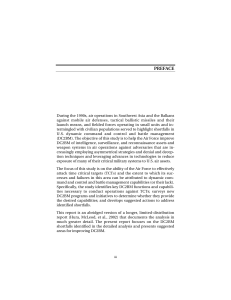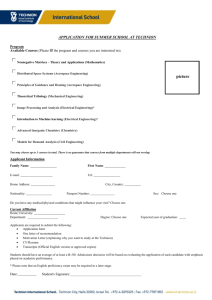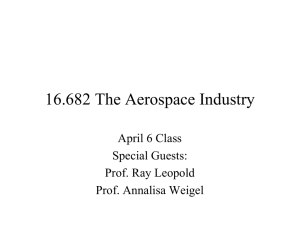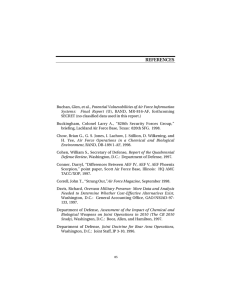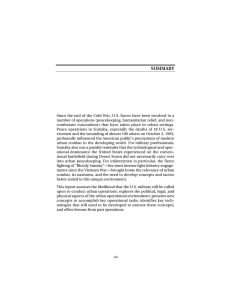PREFACE
advertisement
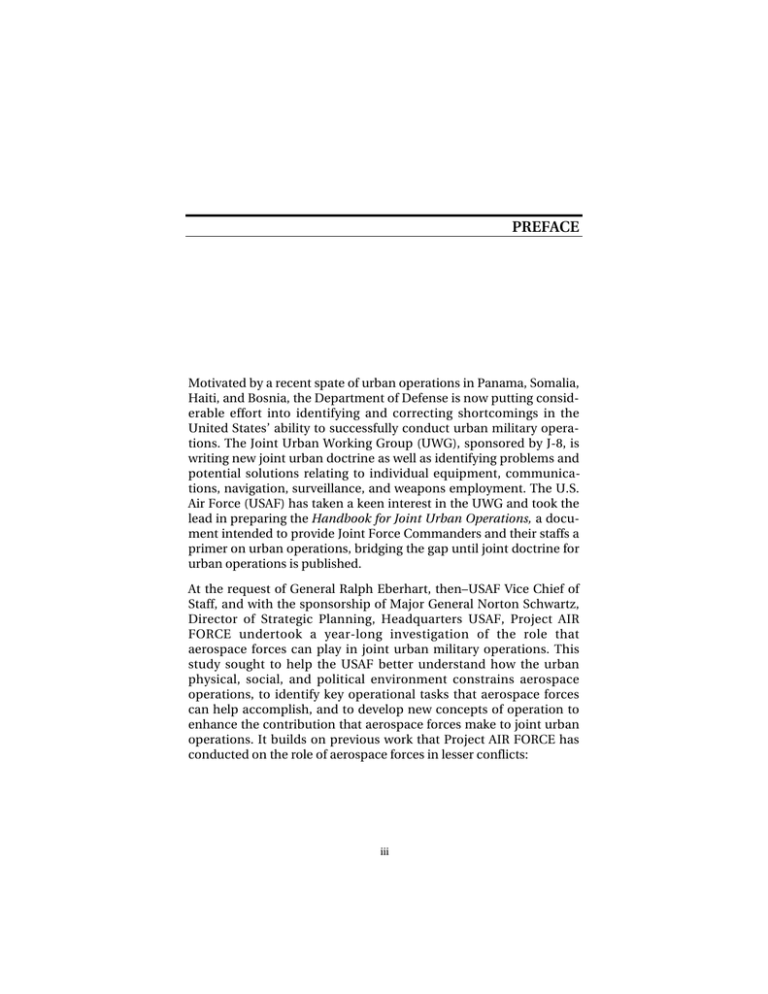
PREFACE Motivated by a recent spate of urban operations in Panama, Somalia, Haiti, and Bosnia, the Department of Defense is now putting considerable effort into identifying and correcting shortcomings in the United States’ ability to successfully conduct urban military operations. The Joint Urban Working Group (UWG), sponsored by J-8, is writing new joint urban doctrine as well as identifying problems and potential solutions relating to individual equipment, communications, navigation, surveillance, and weapons employment. The U.S. Air Force (USAF) has taken a keen interest in the UWG and took the lead in preparing the Handbook for Joint Urban Operations, a document intended to provide Joint Force Commanders and their staffs a primer on urban operations, bridging the gap until joint doctrine for urban operations is published. At the request of General Ralph Eberhart, then–USAF Vice Chief of Staff, and with the sponsorship of Major General Norton Schwartz, Director of Strategic Planning, Headquarters USAF, Project AIR FORCE undertook a year-long investigation of the role that aerospace forces can play in joint urban military operations. This study sought to help the USAF better understand how the urban physical, social, and political environment constrains aerospace operations, to identify key operational tasks that aerospace forces can help accomplish, and to develop new concepts of operation to enhance the contribution that aerospace forces make to joint urban operations. It builds on previous work that Project AIR FORCE has conducted on the role of aerospace forces in lesser conflicts: iii iv Aerospace Operations in Urban Environments • MR-697-AF, Enhancing Air Power’s Contribution Against Light Infantry Targets • MR-842-AF, Preparing the U.S. Air Force for Military Operations Other Than War. This report presents the findings of our study. It should be of interest to Air Force personnel in operations, plans, intelligence, and acquisition organizations. It should also be of interest to aviators in the sister services. Finally, it is our hope that the report will help soldiers, marines, and sailors better appreciate the contribution that aerospace forces can make to joint urban operations. The report is intended as both a reference source and an informative piece of writing. For this reason, clarifying information may be repeated in different chapters. This study was conducted as part of the Strategy and Doctrine Program in RAND’s Project AIR FORCE. PROJECT AIR FORCE Project AIR FORCE, a division of RAND, is the Air Force’s federally funded research and development center (FFRDC) for studies and analysis. It provides the USAF with independent analysis of policy alternatives affecting the deployment, employment, combat readiness, and support of current and future air and space forces. Research is performed in four programs: Aerospace Force Development; Manpower, Personnel and Training; Resource Management; and Strategy and Doctrine.
